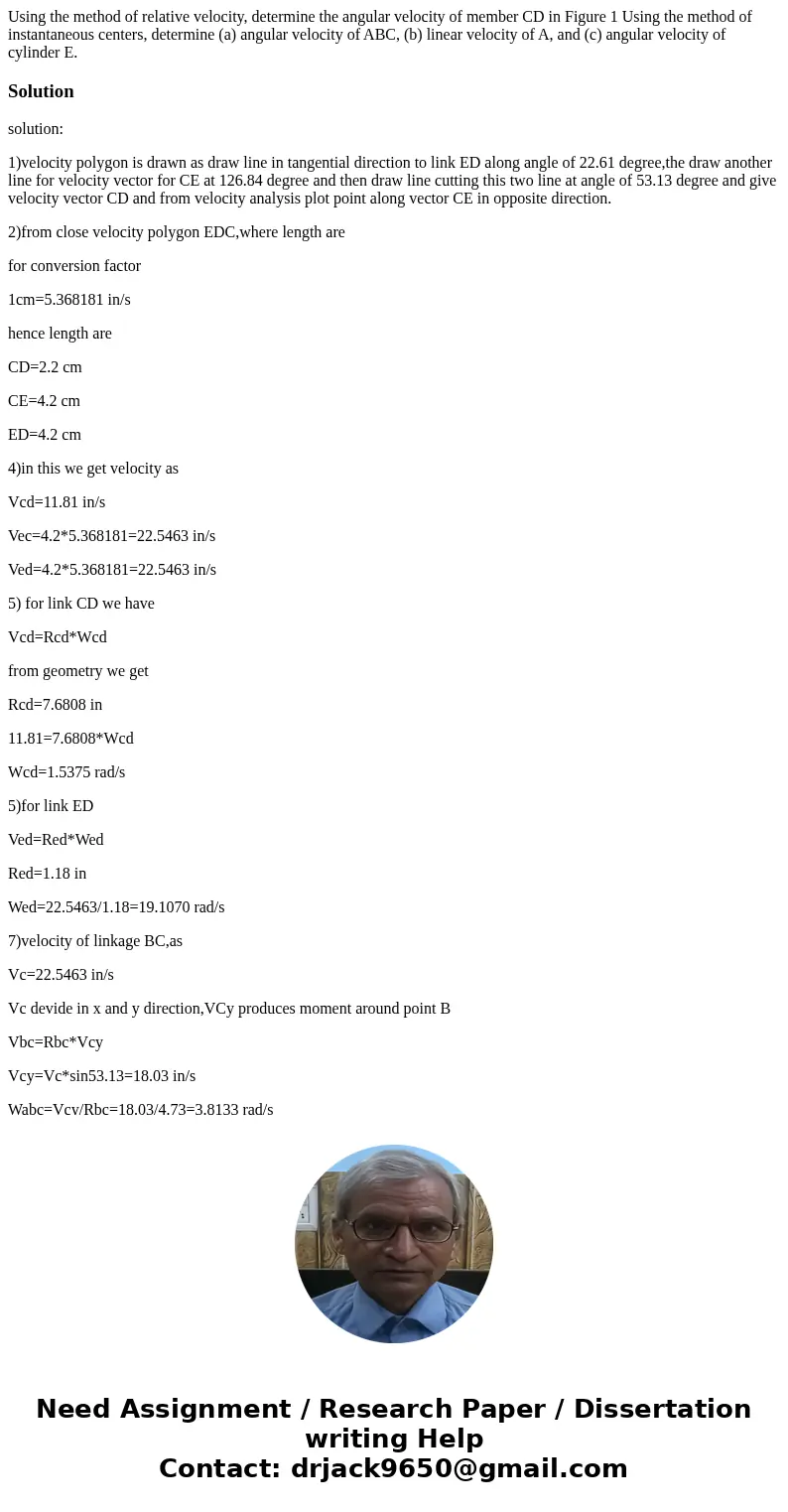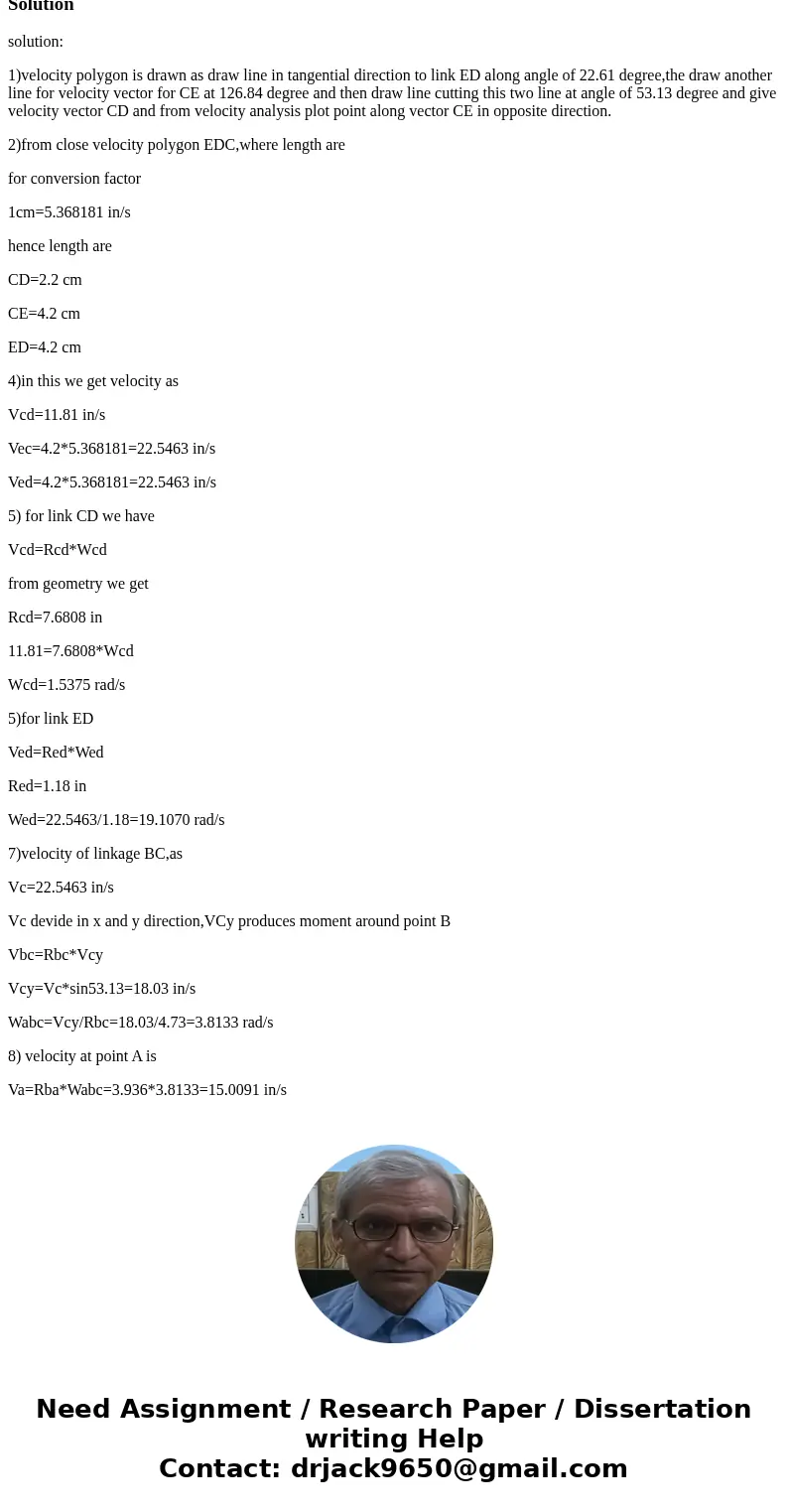Using the method of relative velocity determine the angular
Solution
solution:
1)velocity polygon is drawn as draw line in tangential direction to link ED along angle of 22.61 degree,the draw another line for velocity vector for CE at 126.84 degree and then draw line cutting this two line at angle of 53.13 degree and give velocity vector CD and from velocity analysis plot point along vector CE in opposite direction.
2)from close velocity polygon EDC,where length are
for conversion factor
1cm=5.368181 in/s
hence length are
CD=2.2 cm
CE=4.2 cm
ED=4.2 cm
4)in this we get velocity as
Vcd=11.81 in/s
Vec=4.2*5.368181=22.5463 in/s
Ved=4.2*5.368181=22.5463 in/s
5) for link CD we have
Vcd=Rcd*Wcd
from geometry we get
Rcd=7.6808 in
11.81=7.6808*Wcd
Wcd=1.5375 rad/s
5)for link ED
Ved=Red*Wed
Red=1.18 in
Wed=22.5463/1.18=19.1070 rad/s
7)velocity of linkage BC,as
Vc=22.5463 in/s
Vc devide in x and y direction,VCy produces moment around point B
Vbc=Rbc*Vcy
Vcy=Vc*sin53.13=18.03 in/s
Wabc=Vcy/Rbc=18.03/4.73=3.8133 rad/s
8) velocity at point A is
Va=Rba*Wabc=3.936*3.8133=15.0091 in/s


 Homework Sourse
Homework Sourse